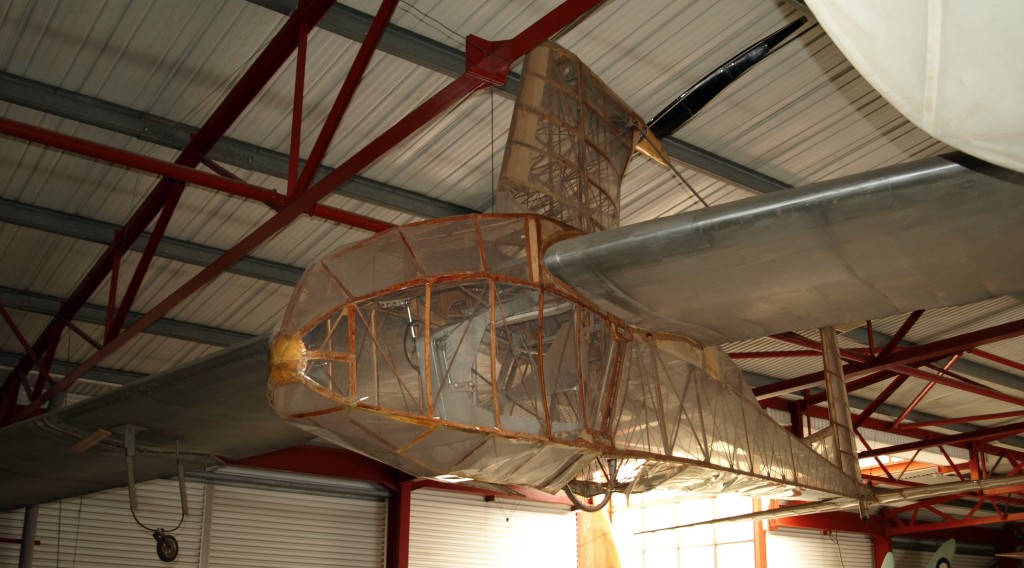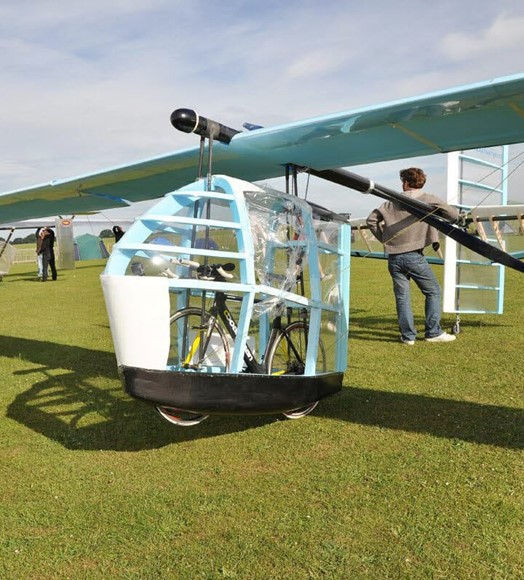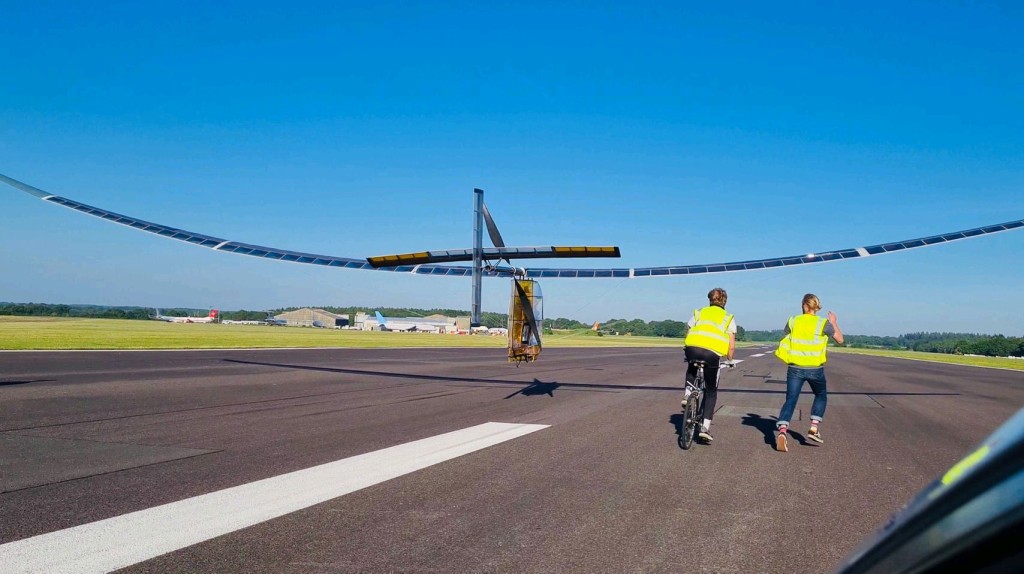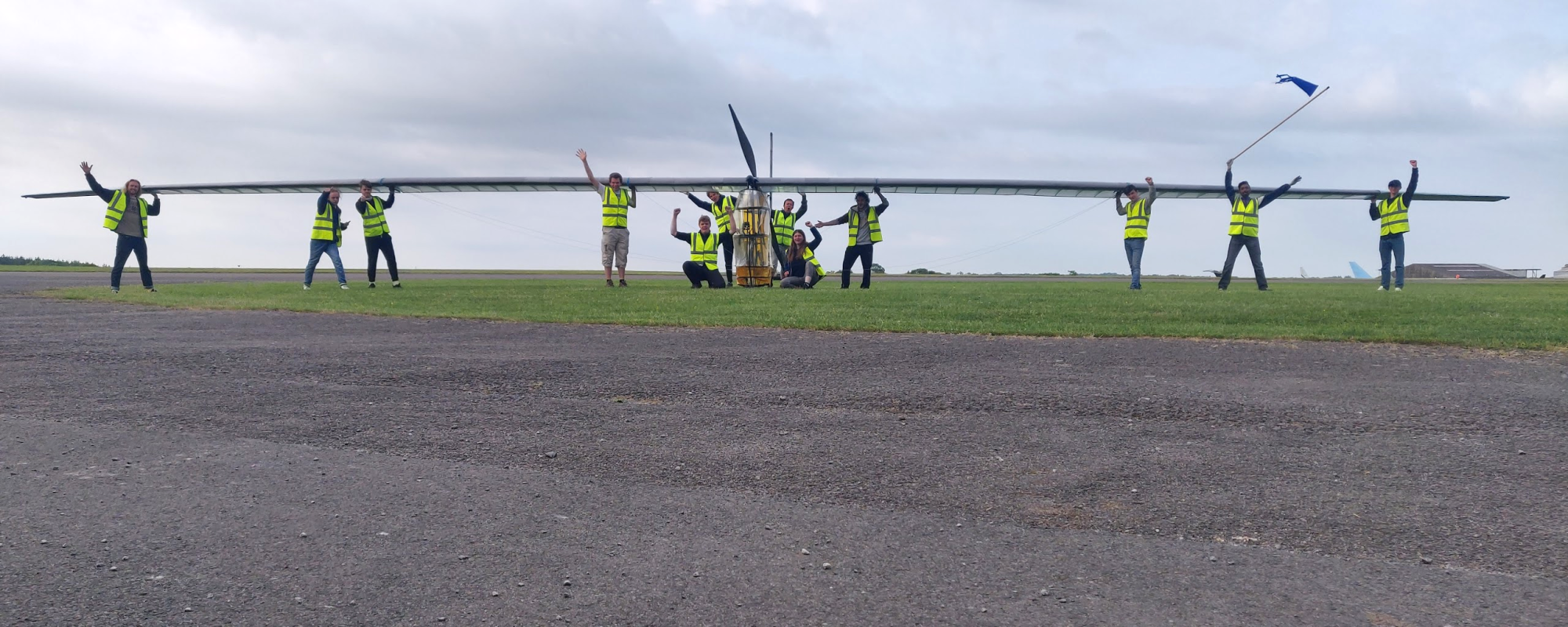The Southampton University Human Powered Aircraft (SUHPA) society is an independent, non-profit university society building pedal-powered aeroplanes. The group formed in 2018 with the goal of granting students access to human powered flight. Despite the impact of COVID-19, students at SUHPA built and flew the first of their award-winning Lazarus series aircraft in June of 2021.
Our history
Team SUHPA (as we exist today) formed in early 2018, the team’s spiritual heritage can be traced back to a small team of postgraduate aerospace engineering students at the University of Southampton in the early 1960s.
On November 9th 1961, an aircraft powered solely by the physical efforts of the pilot completed an unassisted takeoff – for the first time in the history of the world. The Southampton University Man Powered Aircraft (SUMPAC) group completed around 40 flights before a crash in 1963. Although damage was repaired, a decision was made to retire the aircraft. It is now on display at the Southampton Solent Sky museum.

SUMPAC suspended from the ceiling of the Solent Sky museum (2010).
📷 Nimbus227, Wikimedia Commons
Fifty years after this groundbreaking flight, senior lecturer at the university Dr. Alex Forrester would lead a team of undergraduate engineering students to retrace the steps of SUMPAC through the design and build of a brand new Southampton University Human Powered Aircraft (SUHPA) with new manufacturing methods and materials. The aircraft was tested in the summer of 2012, however, a lack of pictographic evidence suggests that it was unsuccessful in achieving flight.

Unknown revision of the SUHPA. The fuselage matches the 2013 design, but it isn’t clear if the 2011 and 2013 designs had identical cockpits). There is no accompanying documentation for this image, but it is speculated that the image was taken at Lasham Airfield (circa. 2012-2013).
📷 Unknown
Also of note, team Betterfly’s logo is visible on the rudder of their aircraft, in the background of this picture.
In 2013, the aircraft was rebuilt with the aim to break the HPA world speed record – with efforts documented as part of the Speed with Guy Martin (2014) TV series. While the speed record was not broken, the aircraft flew successfully. The aircraft would retire to a storeroom as original project members continued to depart the university with the end of their courses. Watch a trailer for the series below!
While the speed record was not broken, the aircraft flew successfully. In the coming years, the aircraft would retire to a storeroom as original project members continually departed the university with the conclusion of their studies. In the 2015/16 academic year students formed the Southampton University Human Powered Flight society, however, it isn’t clear what the group did with the aircraft (if they did anything at all).
Today’s SUHPA society was born in early 2018 when a group of friends aimed to engage with human powered flight in a more tangible way. Curious aeronautical engineering undergraduates at the university found the withered remains of both the 2011 and 2013 aircraft, only identifiable by the distinctive carbon fiber spar construction of their wings and control surfaces. With very little academic experience and funding, the student team did not get very far. This changed in 2019 when SUHPA decided to attend their first BHPFC Icarus Cup competition as spectators. It was here that budding first year student Charles Dhenin consolidated advice from other HPA designers into the Lazarus Mk. I aircraft design the very same summer.
The sweeping effects of COVID-19 resulted in the cancellation of the 2020 Icarus Cup, which the SUHPA team would ultimately spend further refining their HPA. In advance of the following Icarus cup, the aircraft was taken out for trials at Lasham Airfield. These tests culminated in the maiden flight of the Lazarus in June 2021.


